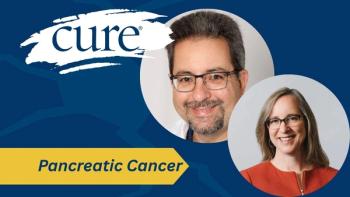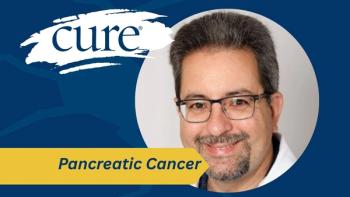
It Takes Teamwork to Treat Myeloma, and Patients Are Key Players
Patients with myeloma should not be afraid to seek out second opinions or speak up about side effects that they are experiencing.
Treatment for multiple myeloma can be complex, and often involves regimens with multiple drugs. As the field continues to advance, it is important for patients to see a health care team that deals with a high volume of patients with myeloma, and to keep open lines of communication between different care teams and clinicians.
“It’s a collaborative effort. It’s not just being seen at a big myeloma center and then that’s it for patients who have community doctors or local hematologists. It’s important that we work together, and everybody has a role in the patient’s outcome,” said Dennis Verducci, a nurse practitioner at the University of Miami Sylvester Comprehensive Cancer Center, in an interview with CURE®.
Verducci recently discussed the importance of communication in myeloma decision making at the CURE® Educated Patient® Multiple Myeloma summit.
Don’t Shy Away from a Second (or Third) Opinion
The Food and Drug Administration (FDA) approved nine myeloma treatments since 2015 – three of which happened this year. With more options than ever, patients should know that there is not a one-size-fits-all approach. In fact, they might not even get the same answer between multiple experts, Verducci explained, though it is still important to hear from them to determine the best plan of care.
“The reality of someone with myeloma is that even if you go to 10 big myeloma centers, you’ll probably get eight different opinions of what to do for treatment next… There are your standard induction regimens, but I think after that with first and second relapse, it’s anybody’s game. There are so many drugs available, and people are still figuring out how to use those drugs together,” Verducci said.
That said, talking with myeloma specialists can be extremely helpful – even if patients decide not to go there for their care. Verducci said that clinicians do not get insulted or offended when patients seek second – or third – opinions. In fact, they oftentimes welcome the collaboration in spirit of doing what’s best for the patient. That is the case for many patients that Verducci and his team sees – people come from all over the country to get advice from the specialists at Miami and can take that wisdom back to their hometown clinicians.
“If you like your local oncologist and you feel comfortable, that’s the most important thing – the patient’s comfort,” Verducci said. “We can always work together with your oncologist, not against your oncologist.”
Deciding on a Myeloma Treatment Plan: What to Consider
After a patient relapses, they should talk with their care team about their personal characteristics that could guide the choice for the next therapy, including what kind of agents their disease responded to in the past, as well as comorbidities and other conditions that they may be dealing with in addition to myeloma. For example, individuals who have a history of heart complications, have uncontrolled high blood pressure or a valve replacement may want to steer clear of Kyprolis (carfilzomib), as it can have cardiotoxic side effects.
Since there are so many treatment options to choose from, patients should not fear speaking up about complications or side effects that they are experiencing.
“When you’re treating myeloma, you want to try to maximize as much as you can each regimen,” Verducci said, explaining that if a patient experiences a side effect like diarrhea, there are steps that can be taken. “You can either dose reduce or give supportive medications that will help control the diarrhea… and at one point, if the patient is still having significant side effects, then I think that it’s important to think about switching therapy.”
As a clinician, Verducci said that he wants his patients to have the best outcomes and quality of life as possible – and those open conversations make that possible.
“We have to talk to the patients and listen to the patients and really find that happy balance between quality of life and treating the disease,” he said.
For more news on cancer updates, research and education, don’t forget to





